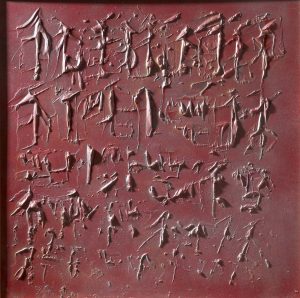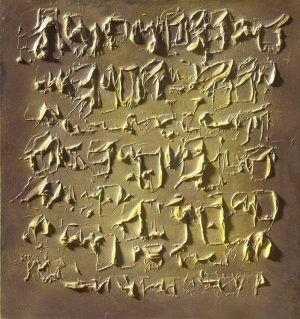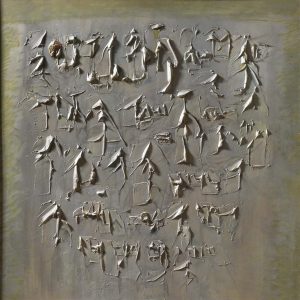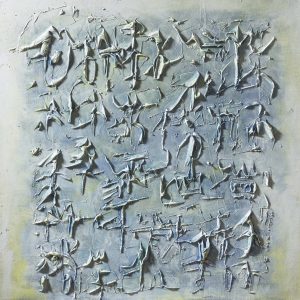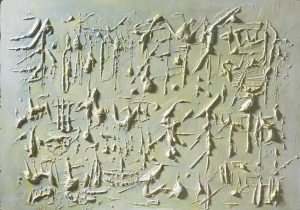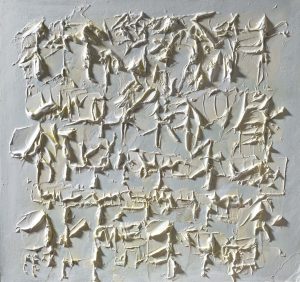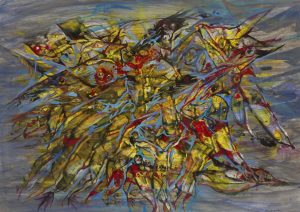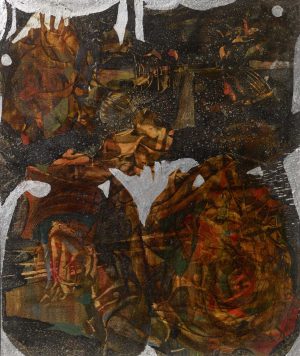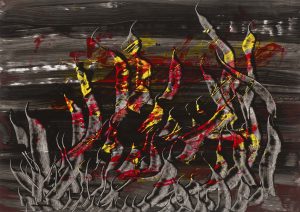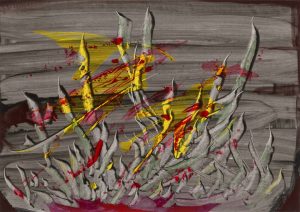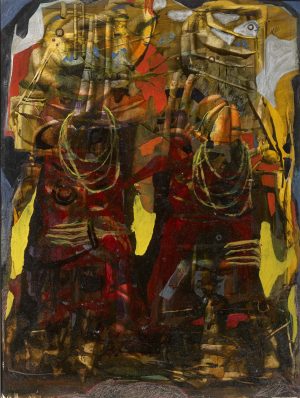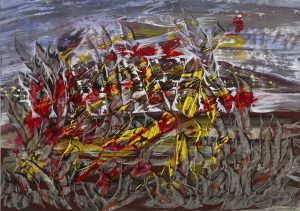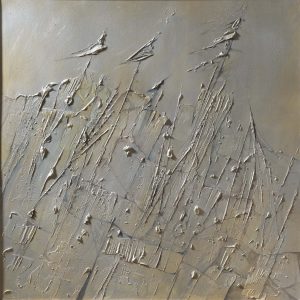
Attila CSÁJI
2011/VII.
- Year(s)
- 2011
- Technique
- mixed media on fibreboard
- Size
- 100,5x100,5 cm
Artist's introduction
Attila Csáji was a prominent figure in the Neo-Avant-Garde art scene of the mid-1960s, one of the most important organisers of his generation, and a pioneer of Hungarian gesture painting and light art. Attila Csáji's inner essence, the symbolism of light, which permeates his "self-principled", multifaceted art, was summed up by Lóránd Hegyi: "For Attila Csáji, light is the phenomena that illuminates the "hidden face of nature". Light reveals the invisible, hidden, essential characteristics, uniting the intellectual and the organic world. In other words, light becomes a mystical force in his artistic world, capable of fusing the infinite cosmos and the infinite realm of the human spirit. " Born in Szepsi in Upper Hungary, Csáji, who moved to Budapest with his family as a child, graduated from the Teacher Training College in Eger in 1964. His works, referred to as "szürenon", created at the beginning of his painting career, combined surrealism and non-figurativity. In his mature oil paintings, calligraphic 'writing marks' and Informel figures, which bulged out plastically, were lined up on the surface as fictitious messages of archaic cultures. According to the artist's interpretation, "The Message Grids are plastic gestural structures, a pantomime or dance of the hand, transformed by light, messages that carry the spell of ancient cultures in the present, at the border between chaos and order." For a while, the ever-growing series of greyish-brown, metallically shimmering 'sign grids' was enriched with applied objects wrapped in black before returning to the sculptural paint mass. In the late sixties and early seventies, Csáji participated as a conceptual artist and active organiser in important events of the Neo-Avant-Garde scene (Szürenon Group, the Kápolna exhibitions in Balatonboglár, etc.). From the mid-seventies onwards, he began to work with various light technologies in the field of fine art, moving beyond the surrealistic relief effect, creating holographic works and laser installations. Driven by the thirst for scientific knowledge, in the 1980s, he studied laser technology at the Central Institute of Physics of the Hungarian Academy of Sciences, then reflection holography at the BME, and then transmission holography at the legendary MIT in the USA. Since the 1980s, his photographic work has been featured in important international exhibitions. His works are in several museums abroad, from Seoul to Cambridge. He has received numerous awards, including the Munkácsy Prize, and is a member of the Hungarian Academy of Arts and has patented a range of ideas. He lives and works in Budapest. Gábor Rieder
More artworks in the artist's collection »


